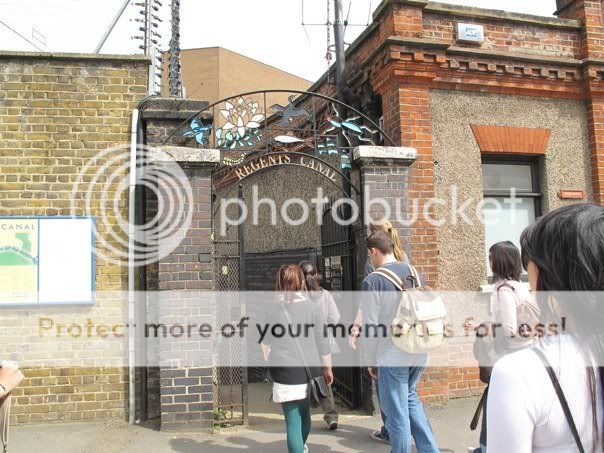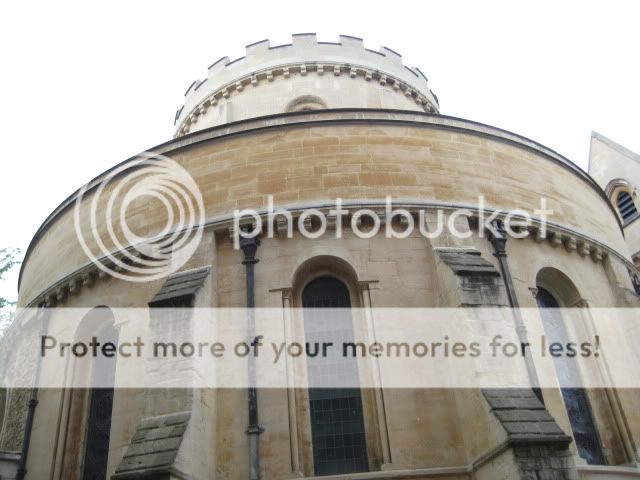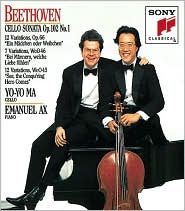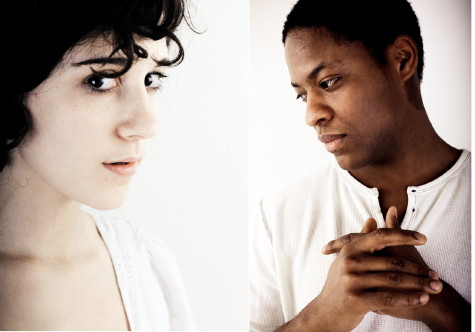Saturday, May 30, 2009
Philosophy of Art: From the Beginning to the End
I have never even heard of this place before Professor Manley took us, and yet it has a very dear spot in my heart. Some of the most disturbing, controversial, yet beautiful pieces I have ever seen.







Geocaching: From Start to End














Friday, May 22, 2009
Master-Pupil Evaluation

Rostropovich vs. Yo-Yo-Ma
 In Yo-Yo-Ma's interpretation, the piano was the main focal point. I did not get the same storyline from his recording. Piano and cello played harmoniously together, with a light and airy balance between the two. Reading on wikipedia, it stated that Beethoven wrote this piece in his time of hardship, as his deafness became more prevalent. This conflict in him brought him to write No. 4. I did not feel the conflict Yo-Yo-Ma's interpretation. It was played much slower, without as much fervor. This piece would be something nice to listen to after a nice dinner and in time for coffee, but not emotional enough for a soundtrack. There was a story behind the Rostropovich's piece, and I enjoyed the emotional attachment to it instead of Yo-Yo-Ma's interpretation.
In Yo-Yo-Ma's interpretation, the piano was the main focal point. I did not get the same storyline from his recording. Piano and cello played harmoniously together, with a light and airy balance between the two. Reading on wikipedia, it stated that Beethoven wrote this piece in his time of hardship, as his deafness became more prevalent. This conflict in him brought him to write No. 4. I did not feel the conflict Yo-Yo-Ma's interpretation. It was played much slower, without as much fervor. This piece would be something nice to listen to after a nice dinner and in time for coffee, but not emotional enough for a soundtrack. There was a story behind the Rostropovich's piece, and I enjoyed the emotional attachment to it instead of Yo-Yo-Ma's interpretation. Sunday, May 17, 2009
Romeo and Juliet Review

Romeo and Juliet is undoubtedly the most popular play where Shakespeare is concerned. Watching it the way that Shakespeare meant for it to be shown, in the Shakespeare Globe, was supposed to be a very enlightening experience where we can go back in time to the Victorian era. Unfortunately, I did not enjoy this play as much as I thought I would. I remembered reading and analyzing the play in my English AP class back in high school, and this was not how I pictured it to be. Considering that this rendition was in the Shakespeare Globe, I thought that it would be more fitting for Romeo and Juliet to resemble close to how Shakespeare would have wanted it done. I felt it was unorthodox to have both Romeo and Tybalt played by Black actors. I am not racist in the least, but when the rest of the Capulet and Montague family are completely white, this makes the storyline less believable. When we first saw the beginning scenes of the play, I was trying to guess who was which character, and I thought that since Juliet was played by such a young actress, that the actor who played Benvolio would be better suited for the role of Romeo. In Romeo's defense, he played the role passionately and with vigor, but I honestly thought he was an understudy throughout the remainder of the play.
Tuesday, May 12, 2009
Bloomsbury Group Project
http://www.panoramio.com/map/?user=3201043#lt=51.397287&ln=0.0312445&z=7
I tried using Panoramio, but I found that using Google Maps was easier.
Here's the link to my Panoramio.
I thought my Google Maps one
(with all of the Bloomsbury Group addresses I can find, by year)
was easier to interpret. I put pictures in there as well.
I
View Bloomsbury Group in a larger map
List of Bloomsbury Group (From Tate.org.uk)
1. Helen Anrep
2. Clive Bell
1920-1922: resides in
3. Vanessa Bell (Stephen)
1904-1907: moves into
1907-1922: stays at 46 Gordon Square w/ husband Clive while Virginia and siblings move out.
1920-1922: resides in
4. Quentin Bell
5. Frederick and Jesse Etchells
6. Roger Fry
1913-1919: Roger Fry’s Omega Studios at
7. Angelica Garnet
8. David "Bunny" Garnet
9. Duncan Grant
1907-1911: his studio at
1907-1911: resides at
10. Mary Hutchinson
11. John Maynard Keynes
12. Lytton Strachey
1909-1924: resides in
13. James Strachey
1919-1956: resides in
14. Leonard Woolf
1911-1912: moves to
1912: marries Virginia Woolf
1924-1939: home w/ wife Virginia at
1939-1940: moves to
15. Virginia Woolf (Stephen)
1939-1940: moves to
1904-1907: moves into
1907-1911: Virginia and brother Aiden’s reside in
1911-1912: moves to
1912: married Leonard Woolf
1924-1939: home w/ husband Leonard Woolf at
1939-1940: moves to
The Bloomsbury Group consisted of many brilliant literary individuals who all seem to have a common bond of some sort. Many met at the Cambridge University while studying, and later lived together. They shared not only a common bond of literature, but also relations with each other. Their sexual explorations are represented in their respected arts, and it was fun to see how close of a proximity they were all to each other. Like a college fraternity or sorority, they fraternized with each other, and made history along with it.
Citations:British Museum + Poetry Interpretation
The reconstruction of the Great Court in the British Museum feels like a lovely medley of two of the greatest countries' architectural feats: the glass pyramid at the Louvre in Paris, and Roman columns from Italy. The equilateral triangle has always represented the strongest shape in architecture, reinforced on all sides perfectly, and as the holy trinity in mythology. Foster's choice of creating the glass ceiling provides both a symbolic and beautiful escape from the sometimes overwhelmingly powerful artefacts and artworks at the British Museum, allowing visitors to look to the skies and beyond for a nice little breather. The centerpiece of the Great Court, with its sprawling majestic staircases, leads up to what I would have thought to be used as the most prestigious exhibition, ends up being only a restaurant terrace. I was sadly disappointed. There is so much intricacy in the Great Court: from the curled detail of the top of the Roman columns on all 4 archways, to the Roman lettering of Queen Elizabeth's name on the centerpiece... I enjoyed it all. Combining French and Italian architecture, Foster brings together the true symbolism of the British Museum and perhaps London in itself: the Museum and the City is a melting pot of all the great works and cultures of our time, as one look into the British Museum, we can see how diverse (from all of the overseas conquering, I'm sure) the country has truly become...
2. Vita Sackville-West's "And so it ends..."
One poem that truly caught my eye in class was Sackville-West's vividly emotional poem on the end of relationships. Doing the Bloomsbury Group Project, I learned that Vita Sackville-West had romantic interests with both female and male counterparts, and I wonder who this poem was about. Perhaps Virginia Woolf? The poem flows like a song, and I can imagine a contemporary artist making a musical rendition with these words.
Your meeting touch upon the string
That still was vibrant, still could sing
This phrase can be vividly pictured in my brain. I see a person being touched by his or her lover, and still remembering the feeling like it was yesterday.
This phrase feels like it was taken right out of a modern day Emo Acoustic music genre band, like Good Charlotte or Blink 182.Would slash me with a naked knife
And gently tell me not to bleed
The Bloomsbury Group's sexual discovery of each other seems to be epitomized in this poem by Sackville-West, as they were married and had different partners, and I can imagine Sackville-West's emotional confusion and distrought with it all in "As it ends..."




